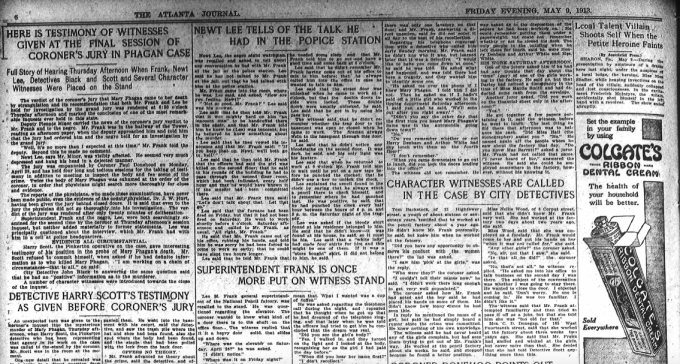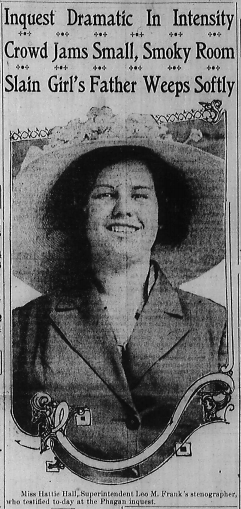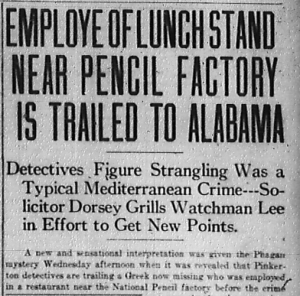Another in our series of new transcriptions of contemporary articles on the Leo Frank case.
Atlanta Constitution
August 3rd, 1913
Dr. J. W. Hurt, county physician, who examined the body of Mary Phagan, took the stand following Detective Waggoner. Dr. Hurt not only made an examination on the Sunday morning that the body was found, but he was present several days later when the girl’s body was disinterred at Marietta by Dr. Roy Harris.
“How long have you been a physician?” asked Solicitor Dorsey after he had put the formal questions to establish the physician’s connection with the case.
“Since 1884.”
“What are your duties as county physician?”
“To attend all inquests and examine the bodies of the dead.”
“Did you see Mary Phagan’s body?”
“Yes.”
“Where did you first see it?”
“At P. J. Bloomfield’s undertaking establishment on the Sunday morning that the body was found.”

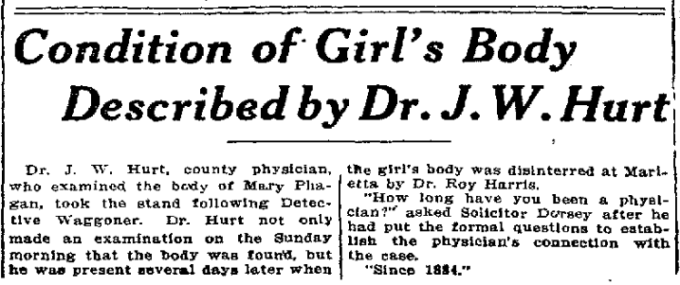
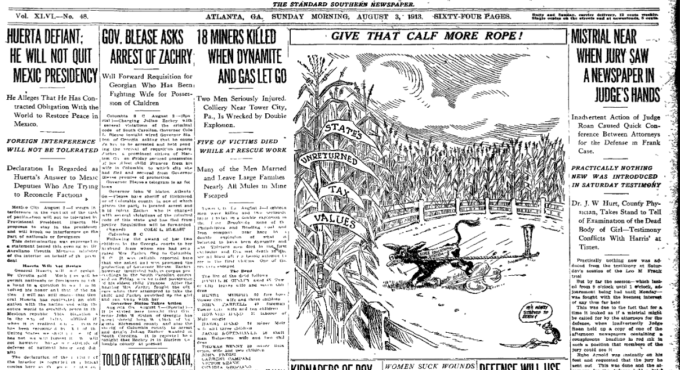
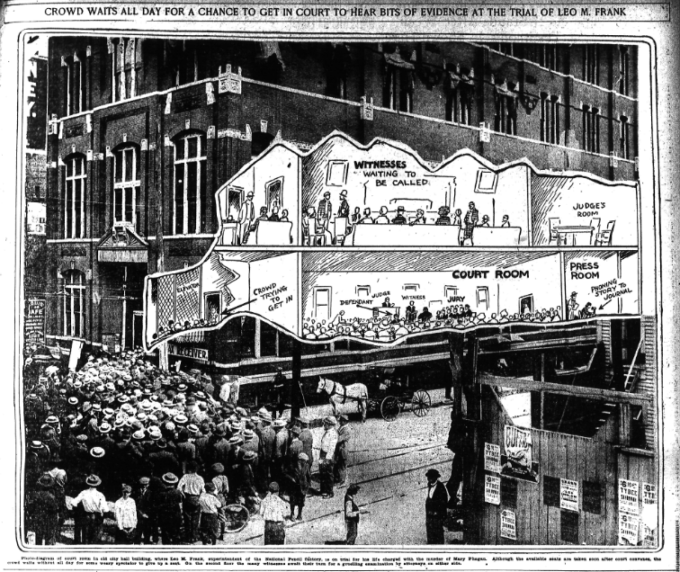
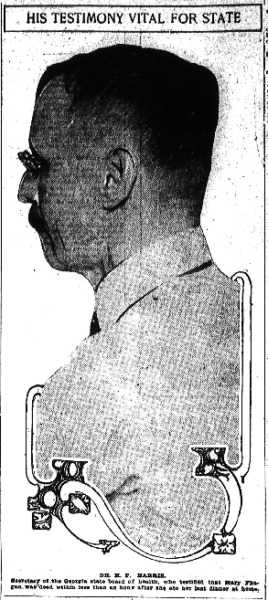
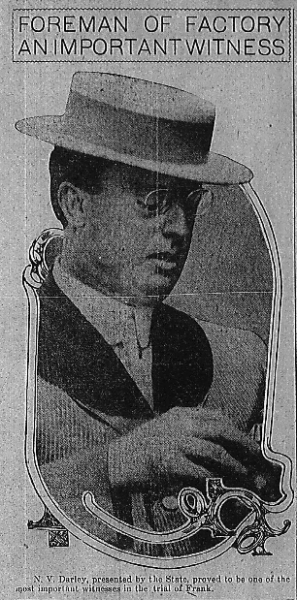

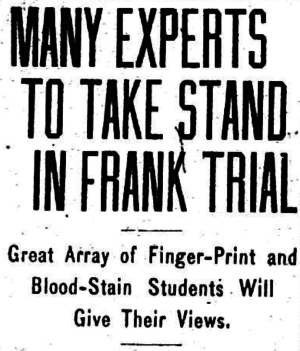 Another in
Another in 